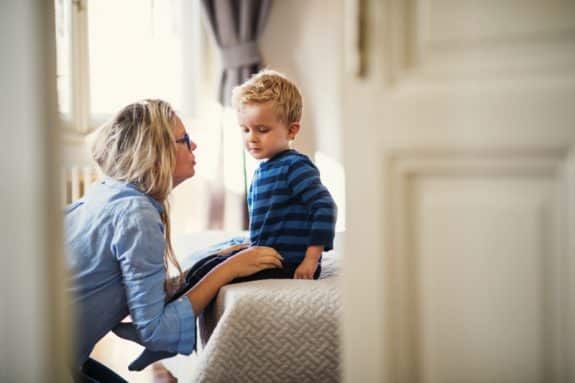Ah, the terrible twos . . .
It’s a time when your sweet angel turns into a bit of a monster. Meltdowns. Biting. Hitting. Stubbornness. Screaming. The list goes on and on.
Interestingly enough, science says parents may be able to curb these “terrible” behaviors by letting their child take the lead.
“It’s not about doing everything for your child or directing their actions. It’s more of a to-and-fro between parent and child,” Claire Hughes, Deputy Director of the Centre for Family Research at the University of Cambridge and co-author of the study, said in a press release. “Parents who do best at this can sit back and watch when they see their child succeeding with something, but increase support or adapt the task when they see the child struggling.”
Hughes and her team, which also included fellow co-author, Rory Devine Ph.D. at the University of Birmingham’s School of Psychology, had recruited more than 400 expectant parents for their study. Each couple was visited when their baby reached 4 months, 14 months, and 24 months.
During the periodic visits, babies were given specific tasks to complete. Researchers filmed the interactions and rated the parents based on their level of involvement. Parents were also asked to rate their baby’s temperament and behavioral issues at 14 months and 24 months of age.
Infants classified as “easy babies” had parents who behaved in similar ways during the challenges. The completion of a wooden animal-shaped puzzle serves as a prime example.
Upon realizing that the task was too difficult for their child to complete, some parents became anxious and started offering a lot of help. Others seemed unaffected by their child’s inability to complete the task as directed and, instead, let their child take the lead.
“We had some children who took two animal pieces from a wooden farm puzzle and started clapping them together and making a game out of the fact that they made a clapping noise. Here, parents might respond by encouraging the child to make animal noises that match the animals being clapped together,” Devine said. “Autonomy supportive parenting is about being flexible, following a child’s lead, and providing just the right amount of challenge,
So, if you are heading into the terrible twos and already noticing signs of resistance whenever you try to redirect or correct your child, consider reigning yourself in a bit. Sit back and allow your child take the lead more often instead of trying to correct, fix, or do for them. You just might be surprised at the results.







